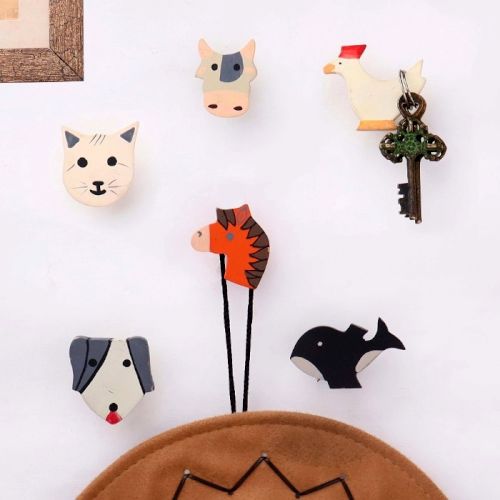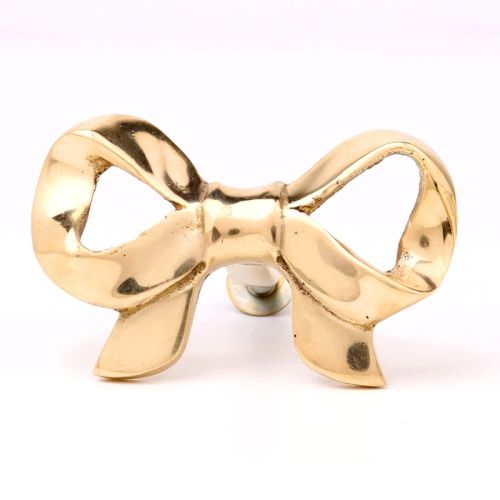-
Radha Krishna Pichwai Painting And elephant Motifs With Different forms of Krishna Li...
- ₹ 29,500.00
- 1 In Stock
General Understanding of Needle Paintings
Needle painting is not simply an artform it is an exercise in stillness. It translates the rhythm of a painter’s brush into the language of thread. Every stroke becomes a stitch every shade a whisper between fibers. This form of embroidery bridges tactility with visual storytelling offering more than decor it offers depth. Practiced predominantly with long and short stitches the technique requires a painter's sense of tone and light yet is sculpted on fabric. It holds time within its weave each layer a result of repetition of waiting of breathing into the surface. What emerges is not just imagery but sentiment embroidered into form.
What Is A Needle Painting?
A needle painting is the textile world's closest echo to a fine art canvas where threads not paints construct the visual. Unlike general embroidery which often follows geometric or motif-based structure needle painting focuses on illusion realism and movement. Artists use long and short stitches to create tonal transitions much like brushwork shading leaves skin or fabric folds with painterly finesse. The play of light and shadow is meticulously handled by blending thread colors layer upon layer to form gradients. Texture is both visual and tactile each stitch elevates the surface without overwhelming it. It’s slow art where composition unfolds not in strokes but strands.
What Emotions Or Themes Do Needle Paintings Commonly Portray?
Needle paintings evoke a quiet reflective emotionality. They seldom shout they murmur. Florals often speak of blooming tenderness nostalgia or fleeting beauty. Landscapes and pastoral scenes carry a longing for stillness echoes of simpler earthy living. Portraits stitched in thread exude intimacy eye contact held longer features rendered with almost sacred care. Thematically many works revolve around the organic and the emotional mourning celebration devotion memory. There is a patience stitched into every work and that patience becomes palpable emotion. In mythological or spiritual renditions needle painting becomes a medium of reverence each figure wrapped in symbolic richness and visual silence.
What Are The Most Recognized Styles In Needle Painting (E.g., Realist, Impressionist, Symbolic)?
Needle painting is a confluence of several stylistic schools filtered through fabric. The Realist style aims for high fidelity mimicking the detail of botanical drawings or fine portraits. Here stitch density layering and color-blending reach microscopic precision. The Impressionist style is more gestural threads soften at the edges colors bleed gently suggesting rather than defining form. This style focuses on capturing light and emotion over accuracy. Folk-inflected or Symbolic styles rely on cultural motifs metaphors and iconography often narrative in nature with stylized shapes and regional color palettes. Across styles thread behaves like paint guided by visual tradition but shaped by touch and time.
Why Are Needle Paintings Still Revered In The Contemporary Art World?
In an age of fleeting images and touchscreens needle painting slows the eye and steadies the hand. It demands attention presence and an emotional investment from both maker and viewer. Each work is hours sometimes weeks in the making. This time becomes part of its value. The art world respects needle painting not just for its complexity but for its resistance to automation. It honors heritage rooted in domestic traditions women’s work and ancestral craft. And yet its themes are timeless. Whether exploring identity nature or abstraction needle paintings transcend medium. They stand as textured records of care a craft stitched against haste.
Techniques, Mediums & Artistic Tools for Needle Paintings
Needle painting isn’t stitched art it’s whispered intention in thread. Every composition unfolds on fabric like a slow-burning monologue. The artist isn’t merely working with hands they’re orchestrating silence, texture, and time. The rhythm of the needle resembles breathwork focused, cyclical, meditative. It demands a painter’s eye, a poet’s touch, and the patience of ritual. Every stitch becomes a pigment, a gesture, a nuance. The tools may be humble needle, thread, hoop but the outcome is painterly, immersive, textural. Through layering, shading, and directional stitchwork, these paintings transcend craft, transforming cloth into emotional landscapes, stitched with intent and unspoken story.
How Were Needle Paintings Traditionally Created?
Traditional needle paintings begin as mapped intentions on cloth often penciled outlines or watercolor washes guide the rhythm of the needle. Artists typically stretch tightly woven fabric in hoops or frames to maintain tension and precision. Long and short stitches mimic brush strokes, offering gradient transitions. Layering builds dimensionality first light, then mid-tones, then shadows each worked with subtle variation in stitch direction and thread thickness. Split stitches and seed filling are often used to blur or intensify texture. The entire process is slow and contemplative, demanding hand-memory and visual memory. Tradition isn’t about rigidity here it’s about ritual. Artists, often women across cultures, passed techniques by hand, not handbook stitched knowledge across generations. Every piece was simultaneously meditative practice and cultural artefact. The rhythm, the pressure, the repetition all mirrored life itself.
What Mediums Were Commonly Used In Needle Painting (E.g., Silk Thread, Cotton, Wool)?
Thread choice in needle painting is as critical as color palette in oils. Silk threads, prized for their sheen and fluidity, lend a luminous, painterly finish. Cotton threads bring weight and texture perfect for matte depth, shadow layering, or rustic tonality. Wool introduces warmth and bulk, often used in stylized or folk needle paintings. More modern artists might use rayon for its shine or blended threads for tonal shifts. Much like brushwork, the medium chosen impacts how light interacts with surface silk reflects, cotton absorbs, wool diffuses. Blending threads two hues in the needle allows for gradient shifts, echoing chiaroscuro or sfumato in visual art. Artists often select their thread type based on the subject silk for florals, cotton for skin tones, wool for narrative backdrops. This tactile spectrum of threads is where needle painting sets itself apart every medium becomes a material emotion.
What Role Did Canvas, Linen, Or Fabric Play In Needle Art?
The fabric in needle painting is more than a support structure it’s a collaborator. It resists, receives, absorbs, and frames. Linen, with its tight weave and durability, is favored for heirloom or detailed work. It holds stitches firmly, allowing for smoother transitions and sustained tension. Cotton softer, more forgiving works well for smaller or rustic pieces, where slight give isn’t a flaw but a texture. Silk fabric offers elegance but requires skilled handling its slipperiness can affect precision. Canvas or muslin, though rougher, are often used for practice or larger narrative pieces. The weave density governs not only tension but absorption how the thread sits, whether it sinks or rides the surface. In essence, fabric determines the emotional tonality linen lends control, cotton brings intimacy, silk offers opulence, canvas demands boldness. It becomes the unspoken atmosphere of the painting, setting the tone before the first stitch is laid.
Artistic Intent and Visual Storytelling of Needle Paintings
Needle painting is the choreography of stillness. Every thread is a syllable in an unspoken language. Some works whisper folklore, others stitch personal grief, joy, lineage, or protest. It is a medium that doesn’t shout it lingers. Like oral storytelling wrapped in cloth, it balances aesthetic rhythm with narrative subtext. Flowers aren’t just flowers they’re metaphors. Portraits aren’t just likenesses they’re thresholds into memory. The slowness of the medium allows stories to mature mid-process. What begins as image becomes intention. Every detail a color shift, a shadow curve, a direction change tells you something, if you listen not just with the eye, but with attention.
What Stories Or Messages Do Needle Paintings Aim To Convey?
Needle paintings don’t declare. They suggest, hint, recall. Often born from cultural memory or personal devotion, these artworks speak through motif, gesture, and stitch rhythm. A single peony may represent fertility or rebirth a bird in flight freedom, yearning, or loss. Portrait-based needle paintings often carry silent narratives aged hands, softened eyes, textile-draped figures that speak more through stitch than expression. Many artists embed rituals into their work a color chosen to honor a grandmother, a pattern drawn from regional embroidery history, a floral arrangement echoing a past festival. When abstract, needle paintings still speak emotionally through asymmetry, repetition, or minimal color fields. It becomes autobiographical without biography thread as memory. Even unfinished works carry meaning a pause, a silence, a story too heavy or too sacred to complete. In short, needle painting isn’t about message it’s about resonance.
How Did Artists Express Political, Spiritual, Or Cultural Symbols Through Needle Art?
Throughout history, needlework has served as quiet resistance. In monastic traditions, saints and angels were delicately rendered onto altar cloths devotion embedded in each stitch. In colonial and post-colonial societies, women used samplers not just to practice alphabets, but to voice dissent, hope, or identity. Quilted needle paintings in the US Civil Rights movement carried slogans and coded visuals. Across Asia, motifs like lotus, elephants, or sacred geometry were used to preserve cultural symbolism. Often, restrictions on women’s public expression found loopholes in thread every stitch a whisper against erasure. These pieces carried coded language a red border to signal mourning, a crow to signal freedom or warning, a repeated motif to invoke protection. The threads became speech. This is not accidental it is ancestral. Artists, knowingly or not, embroidered spiritual legacy, political commentary, and cultural remembrance into their work. Even the choice to stitch was sometimes subversive.
How Do Light, Shadow, And Color Palettes Influence The Mood Of Needle Paintings?
In needle painting, light doesn’t just fall it unfolds. Artists create luminous gradients not with pigment but with careful thread blending and directional stitching. Like hatching in classical drawing, stitch direction catches or dulls light. A petal may shimmer because silk thread shifts tone under daylight. A face may recede because stitches move horizontally across soft-colored cotton. Shadows are built through tonal layering light peach over blush pink, then dusky mauve for depth. The color palette becomes emotional vocabulary. Pale blues evoke reflection or longing. Deep reds pulse with urgency or celebration. Earthy tones ground the work, while jewel tones elevate it. Even neutral palettes, when textured, generate quiet drama. What changes everything is texture some threads sit raised, catching light like sculpture others nestle in, absorbing mood. As time passes, the light angle changes and with it, so does the feeling of the piece. It’s living stillness.
Purchase, Collection & Investment of Needle Paintings
Needle paintings are not mass made canvases they are emotive textiles embroidered with memory patience and lineage. Purchasing one isn't just about décor it’s about acquiring a stitched story. The collector's journey often begins in places where human touch triumphs over machine precision artisanal fairs slow fashion galleries curated folk art platforms or tucked away textile ateliers. These works often feel alive each knot fade and thread twist echoing the maker’s rhythm. Collectors don't just chase aesthetics they seek history technique and rarity. When framed right these pieces become heirlooms a testament to cultural continuity stitched into tactile silence.
Where Can You Buy Authentic Or Reproduction Needle Paintings?
Authentic needle paintings can often be sourced from artisan cooperatives handloom emporiums or cultural exhibitions where regional textile artists showcase their work. In these curated environments storytelling is part of the transaction. Each artist may narrate their design’s heritage material sourcing and intent. Online platforms like IndianShelf, Etsy Okhai and curated museum shops offer handcrafted originals. Reproductions on the other hand populate textile revival marketplaces and contemporary décor websites. While visually compelling they may lack the imperfections that define hand touched authenticity. Regardless of source look for pieces that maintain stitch density varied thread tones and a palpable emotional undercurrent in design and color blocking.
How Can You Verify The Authenticity Of A Needle Painting?
Authenticity is often layered not loudly declared. Look for micro irregularities slight shifts in tension occasional asymmetry in motifs or visible needle backstitches. These signal human labor. The storytelling matters. Does the painting represent a known folk idiom or a regional stitch form like Kashida or Phulkari Certificates of authenticity help especially when issued by heritage organizations or artisan councils. Provenance is key. A credible backstory stitched in origin adds value. Examine the threadwork under natural light. Real hand embroidery will have tonal shifts a sense of breath and layering impossible to replicate with machines. Authenticity lives not just in the piece but in the process purpose and pulse behind its creation.
What Makes A Needle Painting A Worthwhile Investment?
A needle painting is a tactile repository of time. It preserves vanishing craft stitches cultural codes and weaves value not just through aesthetics but through intergenerational resonance. Unlike print reproductions it ages gracefully. A well maintained piece can retain color integrity and tension for decades becoming a bridge between traditional technique and contemporary design sensibility. The rarity of needle paintings especially those from dying artforms or niche geographies enhances their investment potential. Additionally they offer personalization. Many artisans accept commissions based on legacy stories or ancestral motifs. This customization makes them more than décor. They become emotional anchors their value rising not only in markets but in meaning.
Care Framing & Preservation of Needle Paintings
Needle paintings require a balance of reverence and restraint. Their beauty lies in the delicate tension between thread and fabric which can easily unravel if neglected. Caring for these works is less about maintenance and more about ritual. Shielding them from time without freezing their soul. Think of them as textile tapestries of memory best kept away from moisture excessive handling or loud lighting. The right framing preserves not just structure but sentiment. When restored care must be taken not to overwrite the original artisan’s touch. Age adds character. Preservation not perfection is the goal.
How Do You Properly Store And Maintain A Needle Painting?
Proper storage is the difference between longevity and silent decay. Always avoid high humidity. Moisture fosters mildew and weakens thread integrity. Store flat in acid free archival boxes layered with unbleached muslin or acid free tissue paper. For display UV protected glass framing is vital to prevent thread discoloration. Avoid wood pulp boards in framing. Opt for museum grade backings. Light dusting using soft brushes or mesh covered vacuum nozzles can remove settled debris without pulling the stitches. Never iron directly. Use steam from a safe distance if tension warps. Treat the artwork like a textile manuscript handled sparingly preserved deeply and watched over with quiet affection.
What Frames And Materials Best Complement The Needle Aesthetic?
The frame is not just boundary. It’s an extension of the art’s spirit. Wooden frames especially teak walnut or unfinished ash echo the organic warmth of hand stitched textiles. Avoid overly lacquered or glossy finishes. They distract from the work's quiet intricacy. Textile lined frames or shadowbox formats allow the stitches to breathe. Matting should be acid free and in tones that don't clash. Think ivory sage rust or muted charcoal depending on the thread palette. Stay away from synthetic or modernist frames which can starkly contrast the piece’s emotional and material softness. A needle painting deserves a frame that listens before it speaks.
Can Old Needle Paintings Be Restored Without Losing Their Original Feel?
Absolutely but only when approached with sensitivity and craft knowledge. Restoration is a conservation practice meant to preserve not refresh. Begin by consulting textile conservationists familiar with regional embroidery forms. Minor threadwork can be re stitched with color matched silk or cotton floss but don’t aim for perfection. Respect the worn patches as emotional patina. Loose weaves can be stabilized using sheer overlay fabrics or archival support. Never bleach or soak. Hand cleaning is safer. Restoration done right feels invisible retaining the maker’s touch while extending the work’s life. Think of it as preserving the pulse of memory rather than re threading it anew.
What Are Common Damages Needle Paintings Suffer Over Time?
Over decades needle paintings endure environmental and biological wear. Threads may fade due to UV exposure especially reds purples and indigos. Fabric can warp or stretch particularly in humid climates. Mildew can stain or weaken the base cloth and metallic threads if any may corrode. Stitch tension often loosens over time especially in unframed or poorly hung pieces. Pests like silverfish can target natural fibers leading to holes or threadbare patches. However with controlled storage periodic airing and mindful framing such damages can be drastically reduced. These are fragile artworks but when protected well they tell centuries instead of seasons.
Home Decor Styling & Mood Setting With Needle Paintings
A needle painting doesn’t just sit on a wall. It converses with the space. Its quiet tactility anchors fast paced rooms drawing attention to slowness to labor to intention. The textured layering of threads casts gentle shadows that shift with the day’s light. Their presence is poetic almost ritualistic creating visual warmth and narrative intimacy. Whether styled above a reading nook or framed into gallery style walls these pieces don’t scream. They whisper heritage. Decorators use them not just as color accents but as anchors of mood nostalgia tenderness grounding or nature. They are emotion in cloth form.
How Can Needle Paintings Influence A Room’s Ambience Or Tone?
Needle paintings carry mood the way incense carries scent subtle but immersive. Their layered threads reflect light differently at every angle offering depth that evolves through the day. Floral embroideries soothe while geometric or tribal motifs energize. Unlike flat digital prints they invite proximity. The human eye lingers on texture tracing stitches like thought patterns. In a bedroom they add softness. In a living room story. In a hallway curiosity. The silence of needle paintings creates a contemplative hush making spaces feel curated yet soulful. They’re not just wall fillers but ambient storytellers a woven dialogue between mood and material.
What Interior Styles Pair Well With Needle Artwork?
Needle paintings effortlessly harmonize with interiors rooted in earth emotion and handmade aesthetics. Cottagecore interiors welcome their pastoral charm florals birds and folkloric motifs. Rustic and vintage modern spaces gain a sense of craftsmanship from their tactility. In minimalist homes they act as soulful punctuation breaking monochrome austerity with warmth. Paired with handmade ceramics jute rugs and reclaimed wood they tie natural materials together. Even bohemian interiors benefit. Layering them with woven tapestries or macramé enhances texture play. Avoid ultra industrial settings unless contrast is desired. Ultimately needlework art belongs to spaces that honor slowness handcraft and lived in beauty.
How Do You Choose The Right Needle Painting For A Living Room Hallway Or Study?
Choosing a piece depends on spatial rhythm and emotional intent. In a living room opt for centerpiece worthy works lush florals mythological scenes or richly colored figuratives. They create narrative anchors for the space. In hallways go vertical botanical samplers linear patterns or framed embroidery fragments evoke intrigue without overpowering. For a study lean contemplative. Think single flowers philosophical motifs or soft horizon like abstracts. These aid focus and introspection. Match the thread palette with surrounding accents pillows throws or wall textures. Above all choose what moves you. A good needle painting doesn’t just fit. It speaks.
Cultural Impact & Historical Legacy of Needle Paintings
Needle paintings are more than stitched decor they’re living artefacts, tactile memory maps etched in thread. They speak softly of empires, households, and invisible hands that shaped visual history. Across civilizations, this artform carried rituals, legends, and collective identity. Where one culture embedded faith in gold floss, another celebrated seasons with silk plum blossoms. From monastic quietude to royal opulence, needlework served as both public display and private meditation. It isn’t just art it’s a language without alphabets. A mark of devotion, discipline, and endurance. Every stitch tells a story, passed down not printed out.
What Is The Historical Significance Of Needle Paintings Across Civilizations?
Needle paintings served as silent chroniclers of civilization. In medieval Europe, ecclesiastical embroidery adorned churches, narrating biblical tales through threads instead of parchment. In China, the Song Dynasty elevated silk embroidery to an imperial art form, showcasing meticulous gradients of color and light like ink-wash paintings reimagined in floss. Persian and Ottoman courts used embroidered panels to reflect philosophical geometry and divine symmetry. In Mughal India, needlework became both sartorial and architectural embellishment, a fusion of Persian finesse and Indic storytelling. Each tradition used needle as both pen and prayer commemorating power, belief, and memory in wearable or decorative forms. While painters signed canvases, many needle artists remained anonymous, stitched into the very fiber of their culture’s identity. This anonymity, though quiet, is part of the legacy threading forgotten names into eternal visual literature.
How Did Different Cultures Contribute To The World Of Needle Painting?
The world of needle painting is a dialogue in stitches each culture speaking in its own dialect of form, fiber, and meaning. Chinese Suzhou embroidery, for instance, introduced double-sided stitchwork so flawless it defied front and back. Japanese nihon shishu preserved serenity with minimal thread movement and soft-spoken elegance. In contrast, Indian zardozi and kasuti emphasized opulence, narrative, and craftsmanship threading metal, beads, and sequins into scenes of devotion or royal grandeur. Persian artisans pushed geometrical abstraction, echoing tile work and poetry. Even Eastern European traditions like Hungarian matyó injected folkloric color and bold rhythm. These weren’t just regional expressions they were philosophical and spiritual reflections stitched into cloth. Together, they form a global visual archive, a museum of collective human gesture. Each stitch is a signature of place, purpose, and soul distinct, yet in harmony with a shared artistic pulse.
Which Artists Shaped The Evolution Of Needle Art Movements?
Needle painting’s anonymity is its heritage. For centuries, women, artisans, and entire communities practiced it without personal credit creating masterpieces never attributed. Yet the form endures. Modern revivalists like Trish Burr redefined realism in needle painting using thread like brush strokes to evoke delicate fauna and florals. Chloe Giordano introduced micro-stitching with a storybook quality, making miniature creatures feel alive through nuanced shading. In India, the unsung heroes are countless artisans in Kutch, Lucknow, Bengal, and Kashmir preserving traditional techniques like aar and kantha, often as part of community cooperatives or oral design legacies. Their contribution lies not in signature, but in resilience. Even in contemporary contexts, these artists don’t just replicate motifs they reimagine them through cultural evolution. From museums to Instagram, their legacy expands stitch by stitch. Their art isn’t framed in galleries it breathes in textiles, homes, and the hands of the next generation.
Needle Paintings vs Other Art Forms
Needle paintings occupy a tactile territory that painting, print, or digital often can’t access. Where brush meets surface in fluid gesture, the needle punctures time slow, repetitive, deliberate. It doesn’t just build an image, it builds rhythm. This art form lives in texture, in the way light falls on layered thread, in how it refuses instant reproduction. In an age of speed and screens, needle painting insists on pause and presence. It isn't visual alone it's sensorial. Every piece is a physical performance, a quiet resistance to the ephemeral. It doesn’t just capture an image it holds a breath.
How Are Needle Paintings Different From Modern Abstract Or Minimalist Art?
Where modern abstract or minimalist art strips form to explore essence, needle paintings embrace fullness texture, shadow, tone, labor. Abstract expressionism may rely on emotional impulse and negative space, creating meaning through absence. In contrast, needlework is additive. It builds depth through layering, through repetition. One stitch at a time, it forms visual gradients that mimic oil brushwork or chiaroscuro techniques. Minimalism values immediate impact needlework honors slow construction. Moreover, the tactile dimension of thread its ability to catch light, create relief, and invoke warmth sets it apart. Even at its most abstract, needle painting still anchors in the body you feel its presence. It's less about conceptual distancing and more about sensory closeness. Each piece invites you to come near, to trace the narrative not just visually, but through the subtle ridges and textures the living, breathing anatomy of the artwork.
What Sets Needle Paintings Apart From Digital Art Or Prints?
Digital art celebrates precision, polish, and infinite reproducibility. It offers speed, scalability, and conceptual freedom. Needle painting, by contrast, thrives in the limitations of hand and thread. Each stitch is a decision subject to human hesitation, warmth, and variation. There’s no “undo” key in embroidery. Errors are corrected through reinvention, not deletion. This tactile intimacy makes each needle painting singular a one-of-a-kind emotional artifact. Unlike digital works, which can be scaled and duplicated, a needle painting is bound to its maker’s rhythm, breath, and moment in time. Even the back of the canvas tells a story of labor, imperfection, resolve. The slowness is its virtue. Its “pixel” is thread not code. This isn't to undermine digital art, but to underline that needlework holds soul through slowness. It’s not just seen it’s felt. That human trace lingers long after the final knot is tied.
How Do Needle Watercolor Techniques Differ From Thread-Based Works?
Needle watercolor is a technique of illusion thread mimicking the translucency and tonal gradient of water-based pigment. Artists achieve this by using long and short stitches, subtle color transitions, and feathered edges that create the impression of a painted surface. It plays with opacity, often blending five or six hues in a single flower petal to echo the spontaneity of water on paper. Traditional thread-based works, like counted cross-stitch or surface embroidery, emphasize motif clarity, edge definition, and decorative precision. Watercolor-inspired needle painting, however, leans into softness and impressionism. It privileges intuition over geometry, texture over symmetry. While watercolors move with fluidity, thread obeys tension yet in the hands of skilled artists, both mediums meet in lightness. The key distinction lies in dimensionality thread offers lift, texture, and sculptural variation that pigment cannot. One floats on paper the other breathes off cloth.
Emotional & Symbolic Value of Needle Paintings
A needle painting isn’t merely stitched it’s invested. A time-keeper, a memory-keeper, and an act of devotion, all woven into fabric. It’s a medium of sentiment, often passed down rather than bought, gifted more than displayed. Each work encapsulates silence, intention, and often, love. It's a slow-made heirloom in a fast-made world. Unlike mass-manufactured decor, needle paintings carry fingerprints in fiber form. And when received as gifts, they become more than art they become stories. Tangible feelings. A stitched echo of time shared, lost, or longed for. It’s not the thread that holds meaning it’s what’s wrapped around it.
Can Needle Paintings Serve As Meaningful Gifts For Special Occasions?
Yes needle paintings make profoundly meaningful gifts, precisely because they reflect time, thought, and human effort. Unlike mass-produced items, these works demand hours of careful stitching, an investment of the giver’s emotional presence. When personalized perhaps reflecting a shared memory, a favorite flower, or a significant symbol they transcend decor and become keepsakes. Perfect for weddings, housewarmings, anniversaries, or spiritual celebrations, they offer both beauty and soul. A stitched portrait, a mandala in floss, or a favorite poem rendered in fiber all speak to emotional intent. In many cultures, gifting embroidered cloth signifies blessings, protection, and longevity. A needle painting given in celebration is not merely a present it’s a gesture that carries hours, days, sometimes weeks of preparation. The recipient doesn’t just receive a gift they inherit a moment of the maker’s time, energy, and affection, forever preserved in fiber.
What Emotional Value Do Inherited Or Family Needle Paintings Hold?
Inherited needle paintings hold a tender, almost sacred weight. They become family relics tactile bridges across generations. When you touch the threads, you’re not just seeing your grandmother’s labor you’re touching the rhythm of her evenings, the quiet of her patience, her choices of color, her stitched prayers. These aren’t just artworks they’re emotional journals. Often created during moments of solitude, celebration, or even grief, needle paintings absorb the emotional weather of their maker. Passed down, they carry those emotions forward echoes stitched into each loop. They become heirlooms not for monetary worth, but for emotional continuity. They symbolize resilience, care, craftsmanship, and love qualities deeply human yet often intangible. Unlike photographs or documents, needle paintings breathe. The fabric ages, the colors soften, the stitches shift but the presence remains. It is memory you can hang, touch, and pass on threaded time, still alive.
Why Do People Feel A Deep Connection To Needle Art From Past Eras?
Needle art from past eras feels alive. It bears the human touch in a way mass art cannot replicate. People are drawn to its imperfections tiny skipped stitches, faded threads, asymmetrical florals because they remind us of the maker’s presence. Unlike contemporary machine-made embroidery, vintage needle art carries lived experience. Every choice in color, pattern, or motif echoes the societal norms, emotions, and aesthetics of its time. It feels like a diary stitched in silence. These works whisper. They don’t shout their brilliance they reveal it slowly. Perhaps that’s why they resonate so deeply they embody care, time, stillness, and history. In an era of speed and scroll, needle paintings invite us to pause, to connect with slower stories and hands that once moved just like ours. People don’t just admire old needlework they feel it. Because it remembers when we forget.
Frequently Asked Questions (FAQs)
What Defines A Painting As Needle Based?
Needle based painting often called thread painting or needle painting transcends traditional embroidery. It’s not mere stitchwork it’s a painterly illusion achieved with thread. The defining trait is the mimicry of brushstrokes using long short shading directional stitches and thread blending. Fabrics act as canvas threads as pigments. It’s not the image that defines it it’s how the image is built layer by layer stitch by stitch. The visual texture mimics oil or watercolor rendering yet every contour is stitched not painted. Density light play thread sheen and angle control all matter. A true needle painting demands patience and precision transforming embroidery into fine art. You’re not embellishing fabric you’re composing light tone and realism with a needle.
Can Needle Paintings Be Recreated Authentically Today?
Authenticity lies not just in imitation but in process. Needle paintings can be authentically recreated when one embraces the discipline of traditional stitch techniques especially those taught in classical embroidery schools or passed through generations in artisan families. It’s not about copying the image but restoring its soul. The tension of each stitch the layering of threads the subtle variations in color gradients these are not easily taught through diagrams but are felt and practiced. Authentic recreation also demands high quality materials mercerized cotton or silk threads fine weave linen or muslin and hand finished hoops. Many contemporary artists and textile conservators are returning to these roots embracing the tactile slowness of historical craft. Recreating such works becomes a homage not replication but continuation where reverence meets repetition and the needle remembers.
How Do You Protect Needle Artwork From Light And Moisture Damage?
Thread is vulnerable its vibrance fades its structure weakens. To protect needle artwork is to treat it like any heirloom painting. Begin with UV filtered glass or acrylic this filters damaging sunlight that can bleach thread pigment over time. Avoid direct lighting especially halogen or incandescent as they emit heat. Moisture is the silent eroder avoid kitchens bathrooms or damp corners. Frame with archival acid free mounts and backing boards to prevent thread discoloration or fabric rot. Never press the threads against the glass leave a spacer to let the work breathe. For long term storage wrap in muslin never plastic and store in climate controlled conditions. Consider mounting on linen boards rather than cardboard and avoid adhesives altogether. In essence treat it as a hybrid art that breathes like fabric but demands the safeguarding of a painting.
Are Needle Paintings Still Relevant In Modern Art Scenes?
Absolutely and their relevance is only deepening. Needle painting has reemerged as a voice of resistance in the fast paced digital age. It represents slowness intention and tactility hallmarks of the slow art movement. Contemporary galleries are embracing fiber arts not as craft sidepieces but as central conversations around labor time and identity. Artists like Michelle Kingdom or Ana Teresa Barboza use needle based techniques not just for aesthetic beauty but for socio political storytelling blurring the boundary between textile and narrative. The medium is especially resonant with feminist discourses reclaiming domestic arts as forms of expression. Needle paintings are not nostalgic they’re radical in their patience sacred in their repetition. In the modern scene they are no longer relics they are alive pulsing with the personal the political and the poetic.
Can Vintage Needle Styles Be Used In Contemporary Work?
Yes and that’s where magic happens. Vintage needle styles like satin stitch florals Jacobean crewelwork or goldwork aren’t locked in the past. In contemporary hands they become vessels for reinvention. Artists today often borrow motifs color palettes and stitch structures from vintage samplers but subvert them with modern narratives queer identity ecological grief urban dislocation. It’s less about mimicry and more about translation. For instance a traditional floral border might frame a surrealistic dreamscape. Or a Victorian needle technique might voice mental health metaphors. This hybridity the collision of old world aesthetics with new age themes is what gives needle art its evolving relevance. Vintage styles serve not just as technical reservoirs but emotional anchors. In contemporary work they’re not revived they’re reimagined. They carry history but speak now.
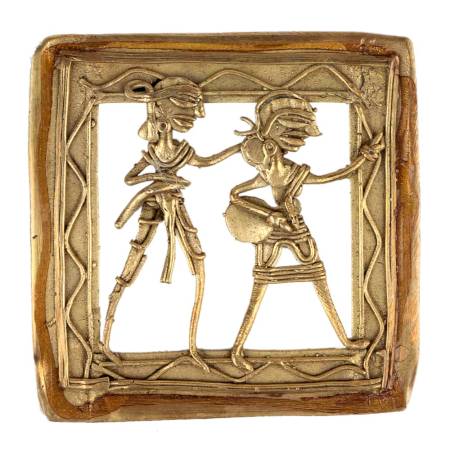
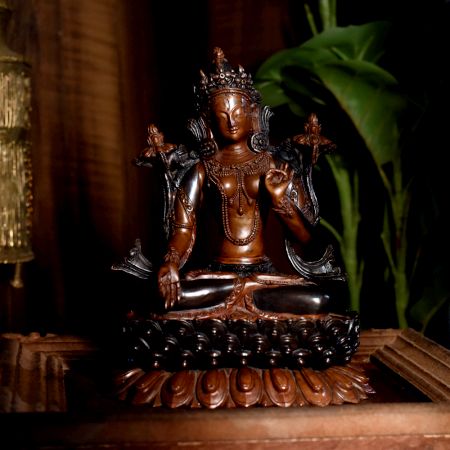
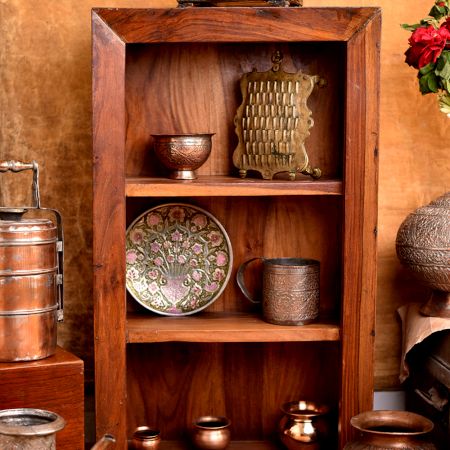
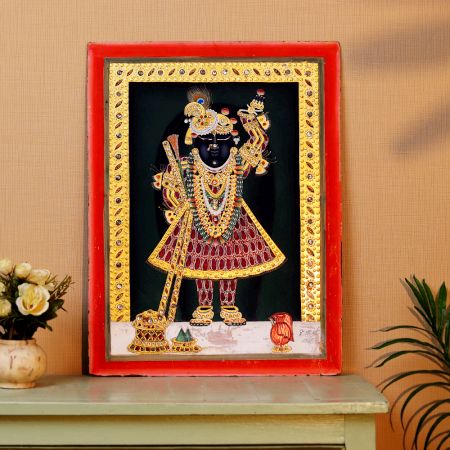
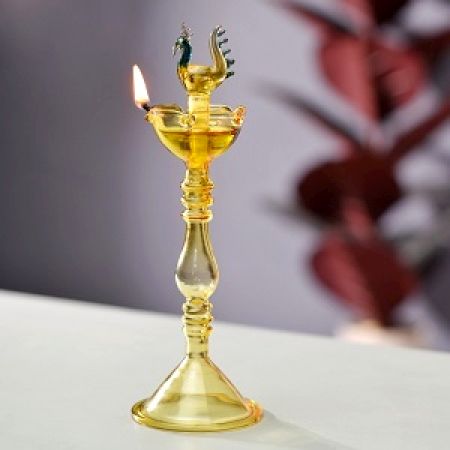

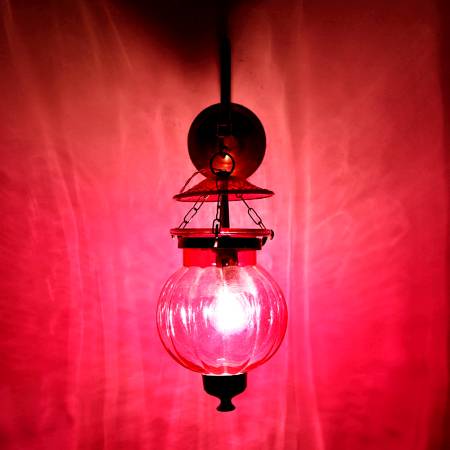

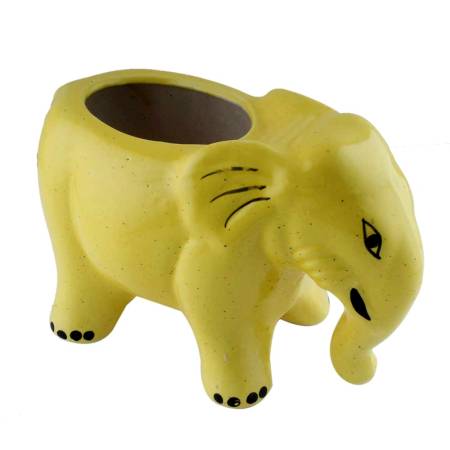
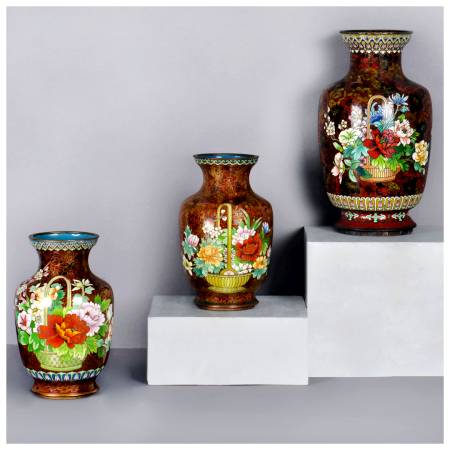
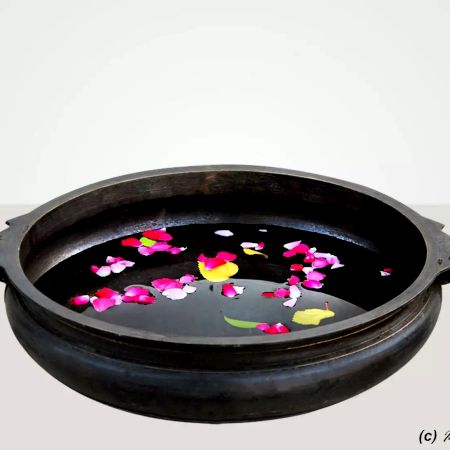
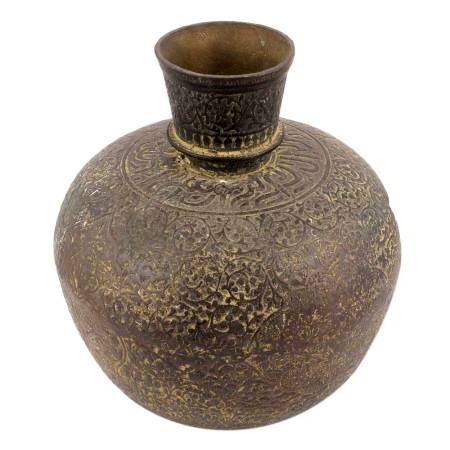
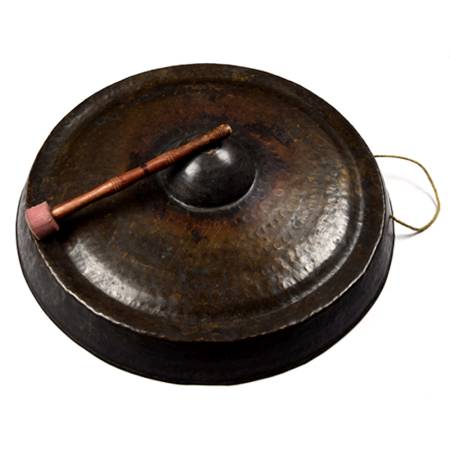
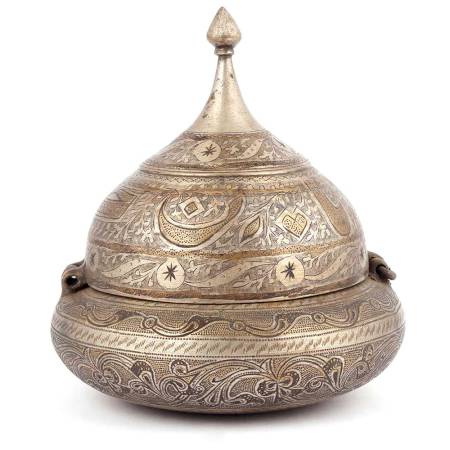

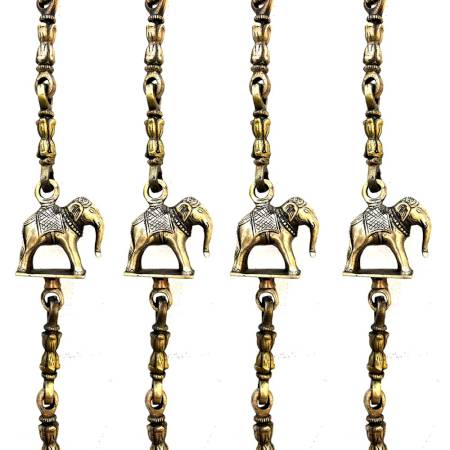
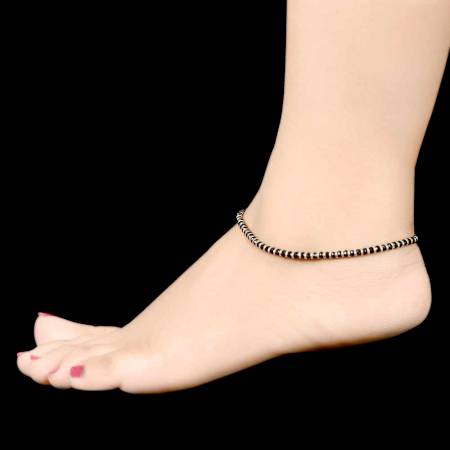
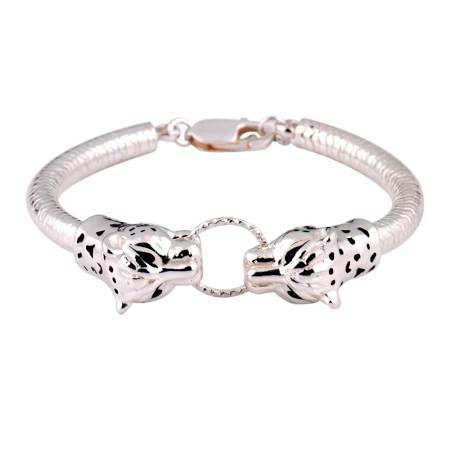
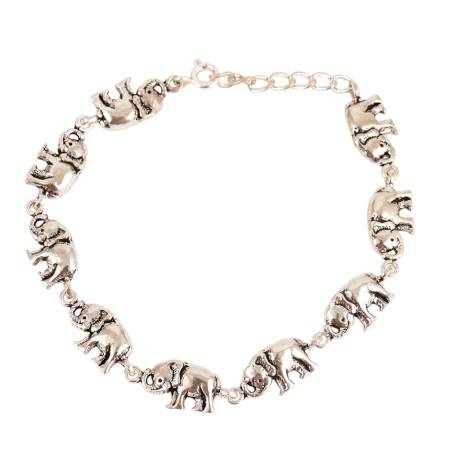
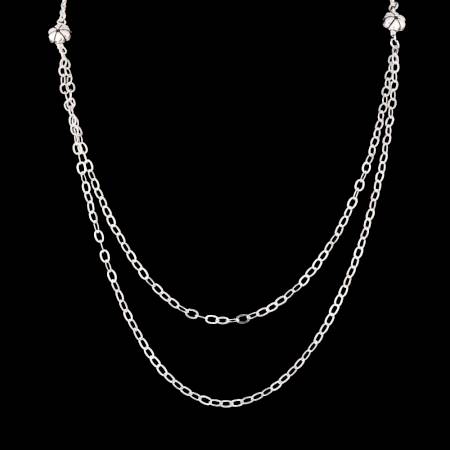

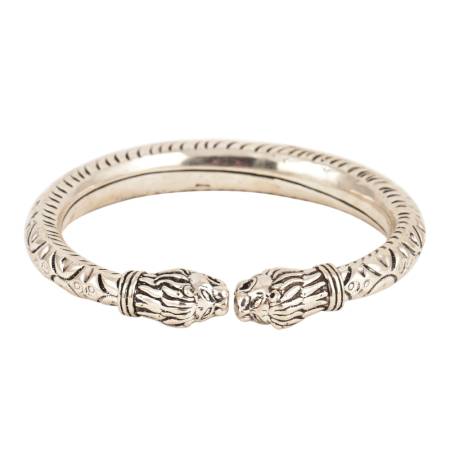
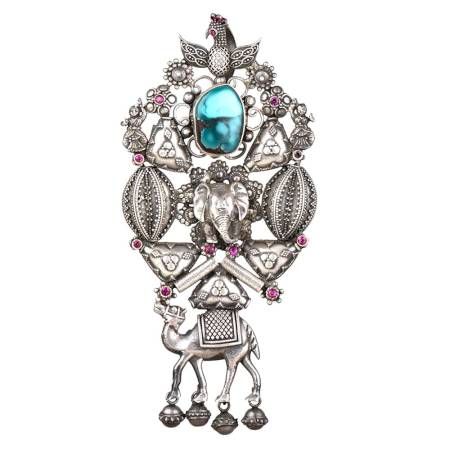
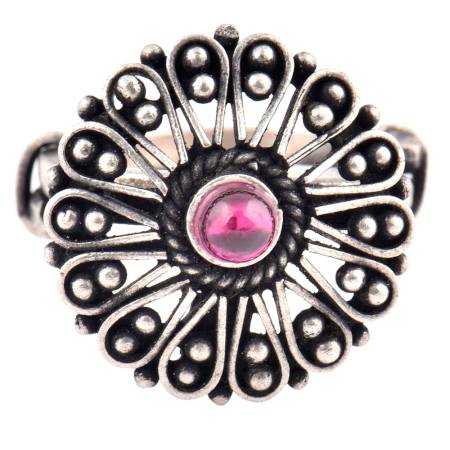
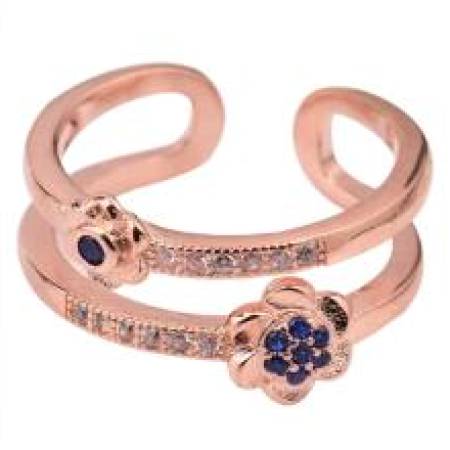
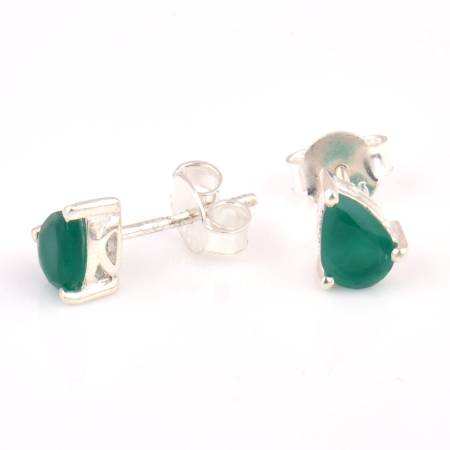

.JPG?ver=1.7)
.JPG?ver=1.7)


.JPG?ver=1.7)
.JPG?ver=1.7)




.JPG?ver=1.7)
.JPG?ver=1.7)
.JPG?ver=1.7)
.JPG?ver=1.7)
.JPG?ver=1.7)
.JPG?ver=1.7)
.JPG?ver=1.7)
.JPG?ver=1.7)
.JPG?ver=1.7)
.JPG?ver=1.7)
